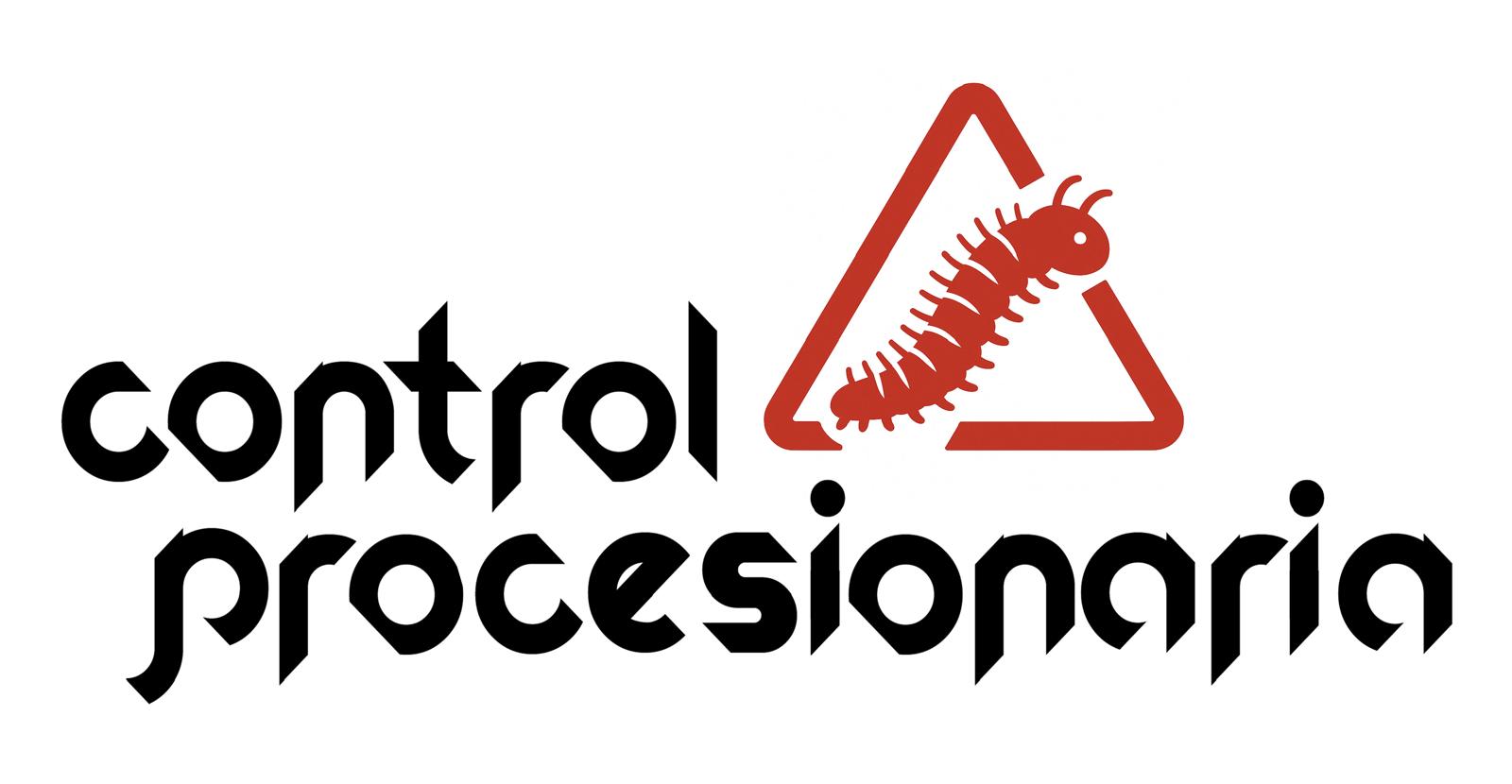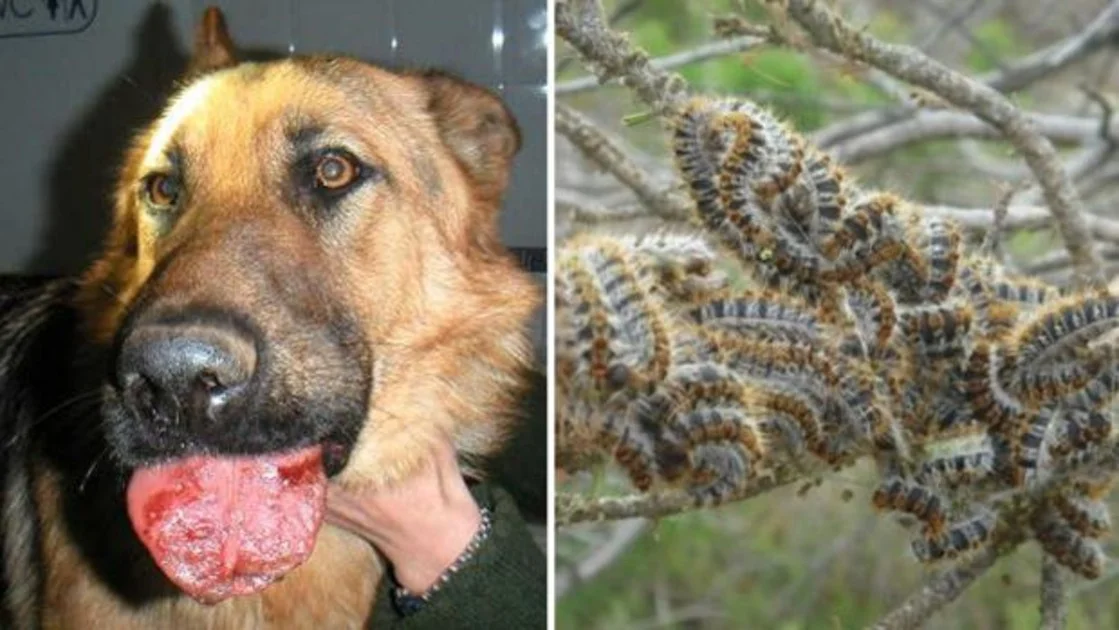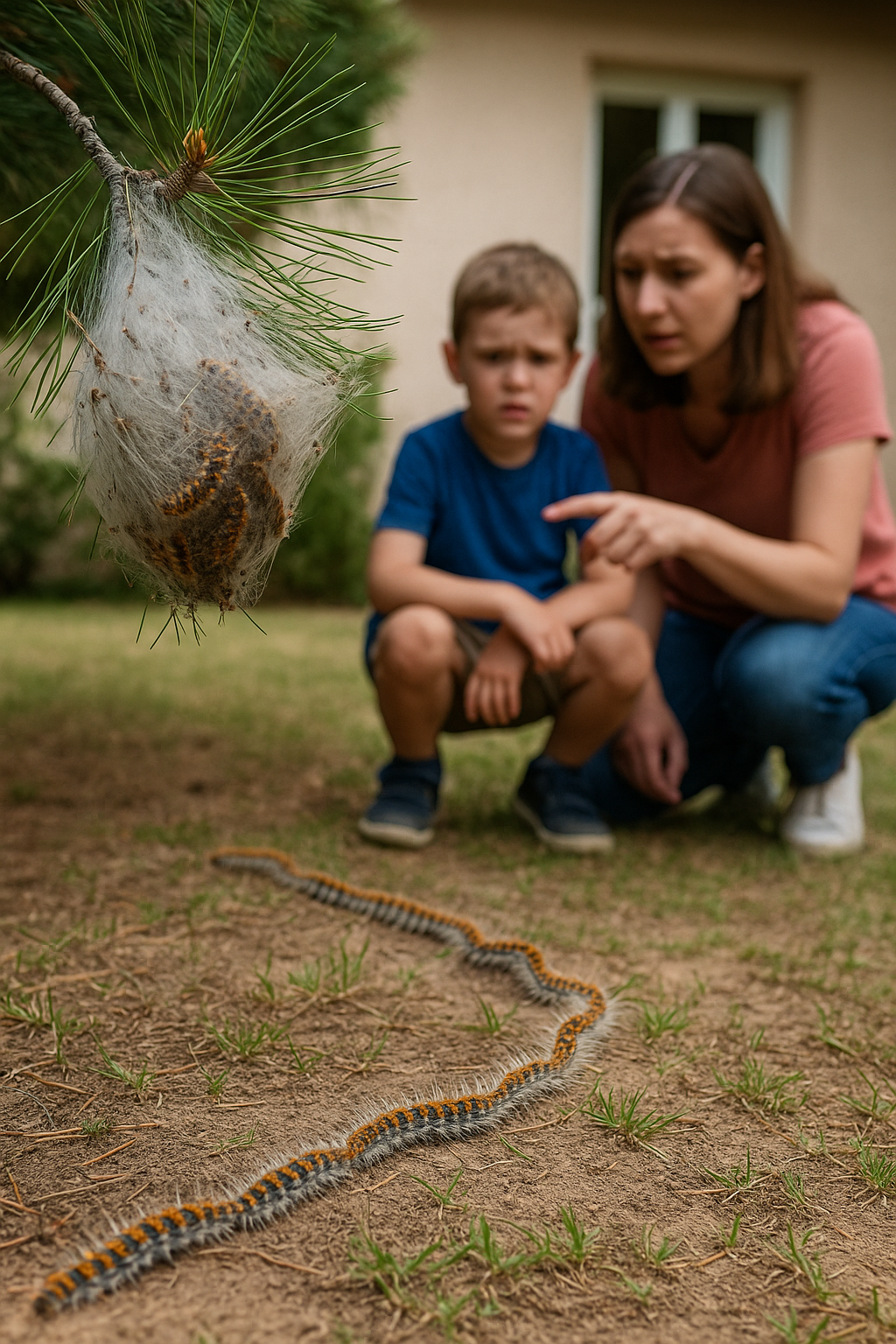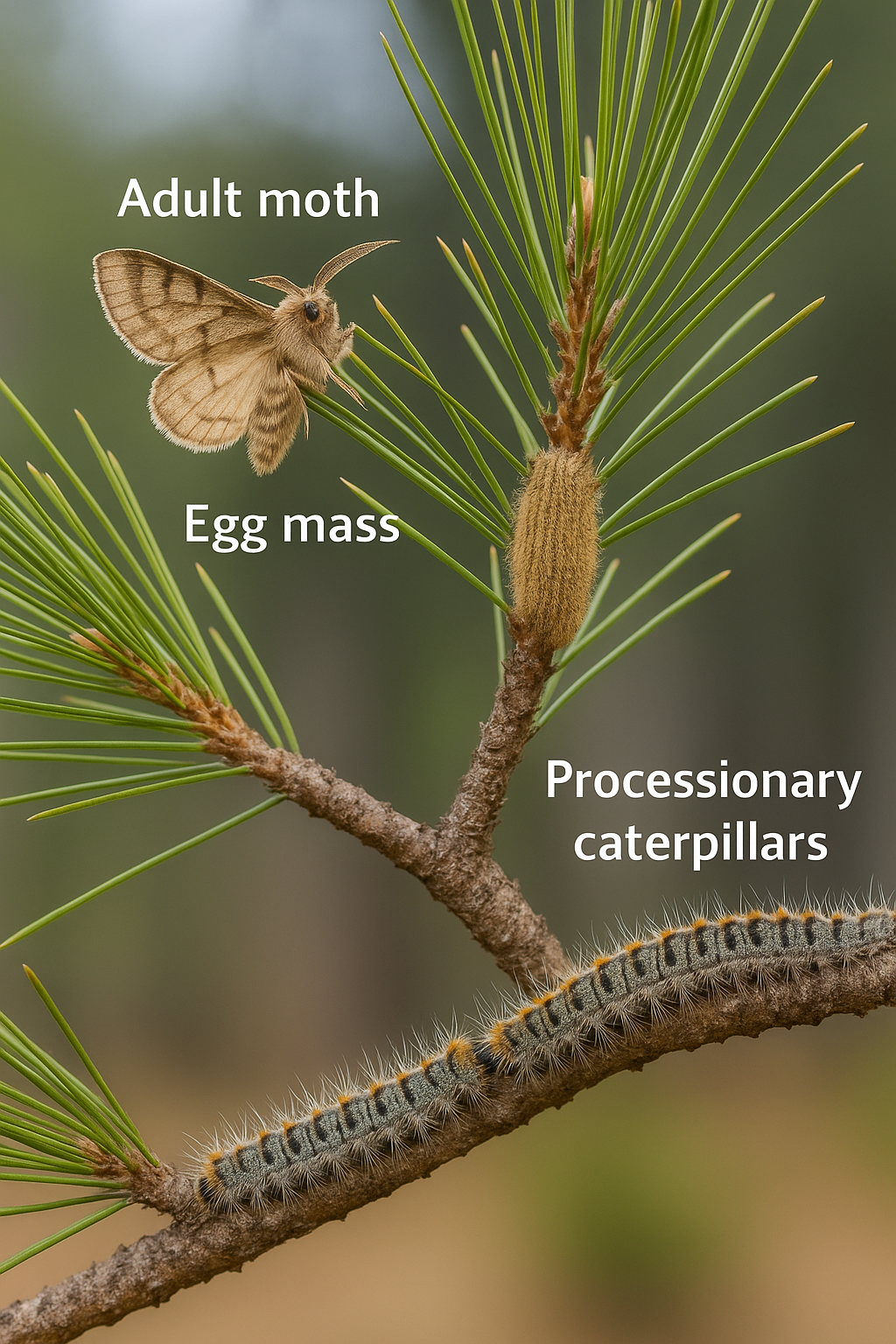Processionary and dogs: the hidden dangers and how to protect pets [Guide 2025]
What is the processionary moth and why is it so dangerous for dogs?
The pine processionary (Thaumetopea pityocampa) It is a caterpillar that moves in long, perfectly aligned rows, hence its name. Although it may seem harmless, it is extremely dangerous to humans. dogs and other pets, as it is covered with stinging hairs that release a very irritating toxin.
When a dog comes into contact with these caterpillars—whether out of curiosity, by smelling them, or even trying to play with them—it can suffer serious reactions that require immediate veterinary attention.
👉 According to the Generalitat of Catalonia:
official information about the pine processionary.
This pest is especially active among January and April, when the caterpillars descend from the pines.
Main risks of processionary moths for dogs
- Skin and mucous membrane reactions: Severe inflammation in the mouth, tongue and lips, excessive salivation and intense pain.
- Tongue necrosis: In severe cases, the dog's tongue may partially necrose.
- Breathing difficulties: If the hairs are inhaled, they can cause choking and throat inflammation.
- Anaphylactic shock: In allergic pets, contact can result in a potentially fatal reaction.
Most common symptoms after contact with processionary moth
- Profuse salivation and foaming at the mouth.
- Constant scratching with the paws on the nose.
- Red and inflamed eyes.
- Vomiting and fever.
- Swollen tongue or with dark areas (necrosis).
If you notice any of these symptoms, go to the vet immediately.
What to do if your dog has had contact with a processionary moth?
- Never touch the caterpillar with your bare hands.
- Rinse the dog's mouth with warm water. (without rubbing).
- Do not use alcohol or other household chemicals.
- Bring it. emergency at the vet so that he can administer appropriate treatment.
👉 The General Council of Veterinary Colleges remember that quick action is key to saving the pet's life.
Prevention: how to protect your pets from the processionary moth
- Avoid walking through areas with pine trees during the critical months (January – April).
- Keep the dog. always tied in forest areas.
- Place antiparasitic collars and follow veterinary advice.
- Find out about local treatment campaigns against the processionary moth.
👉 More information:
Barcelona Provincial Council – Pine processionary
👉 You can also check the FAO, which warns about forest pests such as the processionary moth and recommends constant vigilance.
Frequently asked questions about the processionary and pets
1. Does the processionary moth only affect dogs?
No, it can also affect cats and even humans, especially children.
2. What time of year is there the greatest risk?
Between January and April, when the caterpillars come down from the pine trees to bury themselves.
3. What if my dog just smelled it?
Even without direct contact, the hairs can cause nasal and eye irritation.
4. Can I remove a processionary nest on my own?
It is not recommended. Contact forestry services or specialized companies.
5. Is there a vaccine or preventive treatment for pets?
There is no vaccine, but a veterinarian can recommend preventive measures.
6. Are urban areas also dangerous?
Yes, especially parks and gardens with pine trees. Extreme precautions must be taken.
Conclusion
The Pine processionary moth is a real threat to dogs and other petsKnowing the symptoms, acting quickly and applying prevention measures is vital to protecting pets.
Always remember to consult official sources and go to the vet immediately in the event of any suspected contact.
Links of interest and official institutions
- Government of Catalonia: Pine processionary
- Technical sheet (PDF): Fact sheet about the processionary
- Barcelona Provincial Council: Pine processionary
- Tarragona City Council: Pest control
- General Council of Veterinary Colleges: colvet.es





